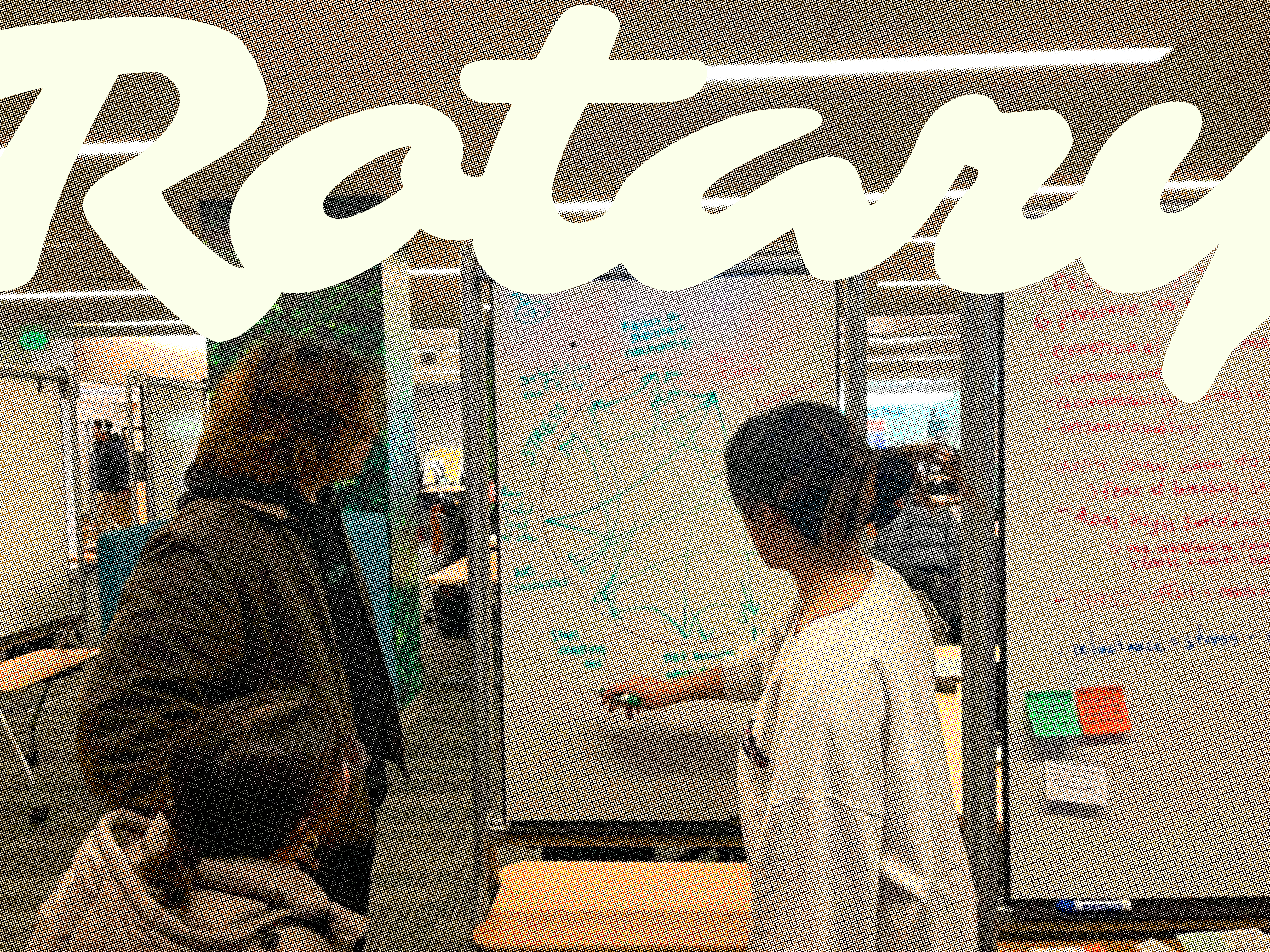A topic I commonly inject into failing conversation is that I don’t believe in “apps.” Coming into this class, I held a firm belief that technology could never really make a deliberate impact on our behavior (that didn’t have ulterior, namely consumerist motives). In the case of smaller apps: I felt they were niche yet soulless, only serving to justify themselves. Sometimes I’ll see an app and equate it to a booming mattress business: that’s a front for the mafia, or something. (Is there an app for that?) From my experience, the only people introducing an army of apps on their psyche were people who were already subscribed to “biohacking” their lives.
With the ongoing discourse of AI replacing human endeavors like art, I’ve become a little disillusioned when it comes to apps doing good, having deliberate influence for good rather than torturing susceptible children with marketable products and college students with the infinite scroll. This is all to say: I don’t think normal people use apps for a specific reason. I think the majority of people are influenced, of course, but I think app use has become more of a background activity, something to fill the gaps.
I’m a SymSys major with a concentration in HCI, so I’m not exactly a stranger when it comes to using or making apps. But that doesn’t mean I like apps. If anything, that might give me more reason not to like them. Whatever.
Don’t get me wrong—I love design. It’s easy to disavow self-justification when it comes to design; the best designs are made with people in mind, after all. Design has a point, and a good one at that. But apps are designed. So it seems like we’ve come to a standstill.
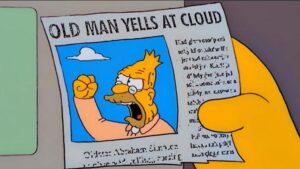
I found this class through choosing a senior capstone for my degree. I had no expectations. Fortunately, I had potentially the best team experience in any class I’ve taken at Stanford. I don’t know what I had to put on that form at the beginning of the quarter to deserve a team like this, but it must have been magic. Each member moved with so much casual intention and experience in every exercise. Having a whiteboard in front of us felt infinitely more productive than other design experiences I’ve had e.g. sticky notes thrown onto a wall without rhyme or reason: our group always found a way forward. This is largely due in part to Annabelle, who acted as our PM, guiding our agendas and structuring our meetings to get enough work done so we could eat snacks or talk about “Florida,” or whatever. Never had I felt more on-track, yet so comfortable in a group project. We were supposed to be strangers!
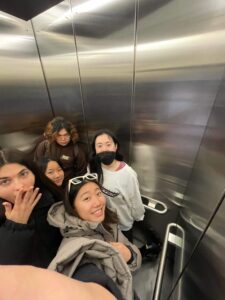
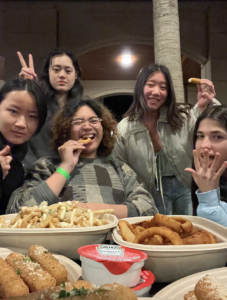

This was one of my busiest quarters outside of school, and I really couldn’t devote as much time to the class I would’ve liked to. My group has always been so considerate and gracious to work around my schedule and health, and I’m so grateful for that.
If I were to be given some more time to dedicate to Rotary, I’d like to really nail down the target audience: “people who need some help in maintaining a connection on their end of a relationship.” That’s a mouthful. It doesn’t exactly get reflected in our app as well as I’d liked it to, and I don’t think we found a more eloquent way of putting it. Although, I am very proud of the team for finding such a nuanced solution in a common problem space. If we were to efficiently explain who our app was for, I think the goal of the app would be more clear (or vice versa).
On the user base of “niche” apps: I do think that the only type of person who would use Rotary would be someone who is already looking to play a more active role in their relationships, but may not know how. What strikes me as different about behavior change as opposed to other purposes for apps is that apps, to me, spell “convenience.” I’ve seen the phrase “intrinsic motivation” floating around this class, and that’s what behavior change requires (from my observations).
Maybe, apps for behavior change don’t need to have the stickiness of replacing routine, becoming essential tools—maybe they can be little additions to routine, an iterative and interactive experience being built upon every day, or as little as just a push. A nudge, even. I do think that the activation energy of using an app is more than placing a mouthwash or floss closer to your toothbrush, but considering we can’t usually get by without our phones nowadays, our home screens are just one big bathroom sink for behavior change. This doesn’t really change my stance on the fact that the people who want to make an effort to change their behavior are the ones who take the first step, which aligns with my notion that the only people who use such specific apps are the ones who already subscribe to the fact that they work. Which might be fine, at the end of the day. Not everything has to be for everyone. Or does it?
I appreciated the ethics discussions in 247B; I was in the studio geared toward accessibility in CS 147 last winter, but I felt like I didn’t know enough about either the theory or actual practice of inclusivity in design. Our team definitely could have had more of a focus on accessibility in our app concept. For something as simple as documentation, we could have expanded to recordings or voice memos (especially since we weren’t required to implement). One behavior I changed as a result of my interviews throughout our studies was that I try to send my friends spontaneous voice memos when I can. In hindsight, I think this is something we could have explored in our app. I’ve been thinking a lot about “responsibility” in design lately, and I think designing inclusively is what this means. I’m very interested in exploring multimedia applications for accessibility.
On the class structure and assignments: I felt as if we didn’t quite get the ball rolling until a little too late. The course felt as if it were reiterating things from 147; redundancy felt ever-present when repeating exercises or lessons that took up week’s worth of time. I love the idea of conducting these studies and developing according to a specific behavior change, and would’ve liked to see one more round of iteration for a prototype. I also felt like I was a little in the dark when it came to other teams’ projects, which I felt was a shame— I always like seeing the evolution of a project (especially when it’s done by so many other talented designers!). Somehow, sketchnotes are not something I subscribe to, despite the fact that I take all my notes and sketches in one journal that I carry around everywhere. But, the “sketch-note” type of stripped down visualization just doesn’t work for me. We created language for a reason; I don’t think it’s more fit to limit our visual representations when we could use all of our tools to make something more communicable. The sandbagging just feels performative. I would much rather take a quiz on the readings. I really like sketching, I really like taking notes, and I hate taking exams. So I’m thinking sketchnotes aren’t for me.
And on my takeaways, long-term: I was working on a different project as a UI/UX designer this quarter, and I used the majority of the strategies taught in this class to inform my designs as well as brainstorm as a team. I conducted a number of user interviews that I designed using the same templates as some of the study interviews, and grouped key thoughts and ideas onto whiteboards. With these in mind, I brainstormed some key features and sketchy screens with my other team members. It was exciting to see that I could apply these tools so quickly. As I learned more design methodology in 247B, I became more fit to be an informed design lead in other groups. I became better at knowing what to spitball, the structure of ideating an app, and teaching non-designer effectively and inclusively.
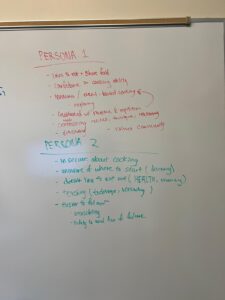
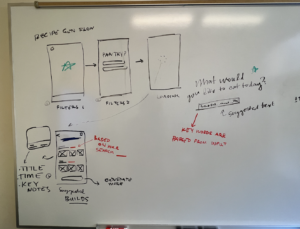
I had fun!
Signing off,
Jared

